Shuo Jin
Medical Multimodal Foundation Models in Clinical Diagnosis and Treatment: Applications, Challenges, and Future Directions
Dec 03, 2024



Abstract:Recent advancements in deep learning have significantly revolutionized the field of clinical diagnosis and treatment, offering novel approaches to improve diagnostic precision and treatment efficacy across diverse clinical domains, thus driving the pursuit of precision medicine. The growing availability of multi-organ and multimodal datasets has accelerated the development of large-scale Medical Multimodal Foundation Models (MMFMs). These models, known for their strong generalization capabilities and rich representational power, are increasingly being adapted to address a wide range of clinical tasks, from early diagnosis to personalized treatment strategies. This review offers a comprehensive analysis of recent developments in MMFMs, focusing on three key aspects: datasets, model architectures, and clinical applications. We also explore the challenges and opportunities in optimizing multimodal representations and discuss how these advancements are shaping the future of healthcare by enabling improved patient outcomes and more efficient clinical workflows.
Temporal Consistency Learning of inter-frames for Video Super-Resolution
Nov 03, 2022Abstract:Video super-resolution (VSR) is a task that aims to reconstruct high-resolution (HR) frames from the low-resolution (LR) reference frame and multiple neighboring frames. The vital operation is to utilize the relative misaligned frames for the current frame reconstruction and preserve the consistency of the results. Existing methods generally explore information propagation and frame alignment to improve the performance of VSR. However, few studies focus on the temporal consistency of inter-frames. In this paper, we propose a Temporal Consistency learning Network (TCNet) for VSR in an end-to-end manner, to enhance the consistency of the reconstructed videos. A spatio-temporal stability module is designed to learn the self-alignment from inter-frames. Especially, the correlative matching is employed to exploit the spatial dependency from each frame to maintain structural stability. Moreover, a self-attention mechanism is utilized to learn the temporal correspondence to implement an adaptive warping operation for temporal consistency among multi-frames. Besides, a hybrid recurrent architecture is designed to leverage short-term and long-term information. We further present a progressive fusion module to perform a multistage fusion of spatio-temporal features. And the final reconstructed frames are refined by these fused features. Objective and subjective results of various experiments demonstrate that TCNet has superior performance on different benchmark datasets, compared to several state-of-the-art methods.
Dense residual Transformer for image denoising
May 14, 2022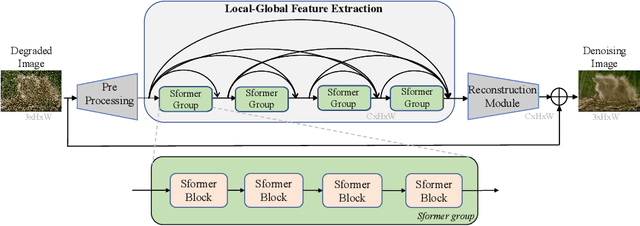
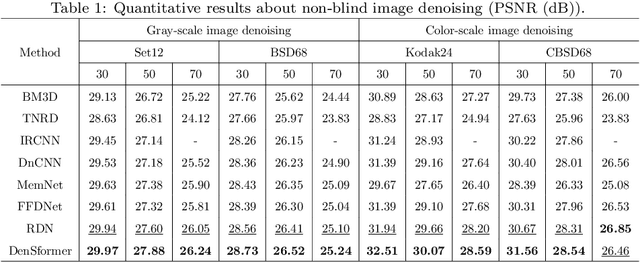
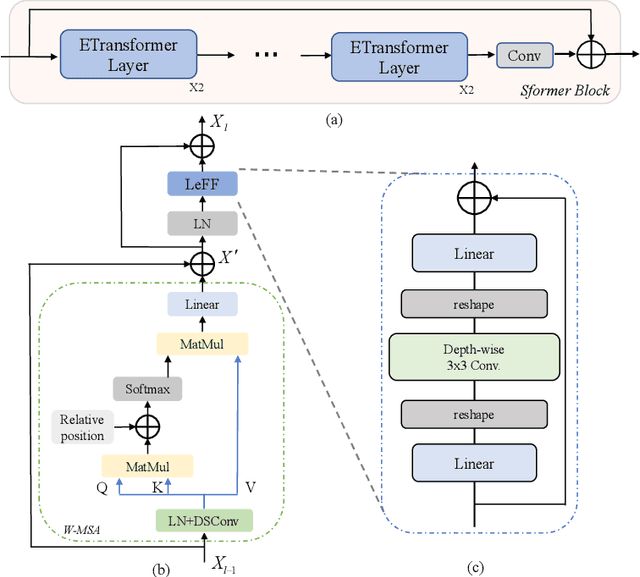
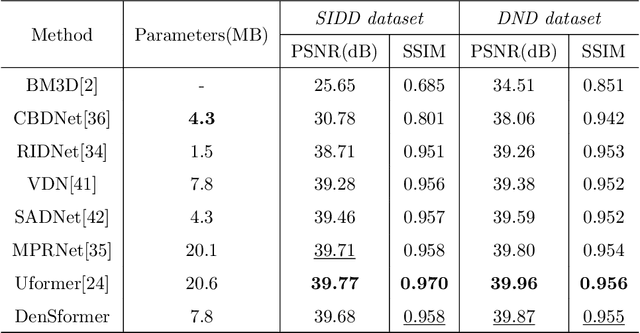
Abstract:Image denoising is an important low-level computer vision task, which aims to reconstruct a noise-free and high-quality image from a noisy image. With the development of deep learning, convolutional neural network (CNN) has been gradually applied and achieved great success in image denoising, image compression, image enhancement, etc. Recently, Transformer has been a hot technique, which is widely used to tackle computer vision tasks. However, few Transformer-based methods have been proposed for low-level vision tasks. In this paper, we proposed an image denoising network structure based on Transformer, which is named DenSformer. DenSformer consists of three modules, including a preprocessing module, a local-global feature extraction module, and a reconstruction module. Specifically, the local-global feature extraction module consists of several Sformer groups, each of which has several ETransformer layers and a convolution layer, together with a residual connection. These Sformer groups are densely skip-connected to fuse the feature of different layers, and they jointly capture the local and global information from the given noisy images. We conduct our model on comprehensive experiments. Experimental results prove that our DenSformer achieves improvement compared to some state-of-the-art methods, both for the synthetic noise data and real noise data, in the objective and subjective evaluations.
RefineCap: Concept-Aware Refinement for Image Captioning
Sep 08, 2021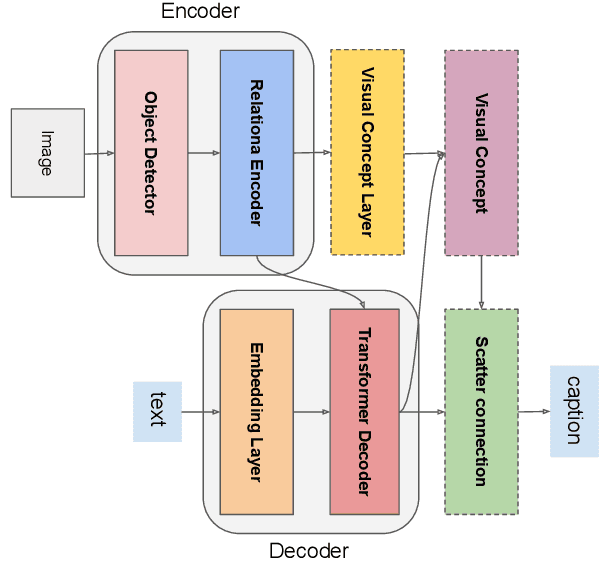

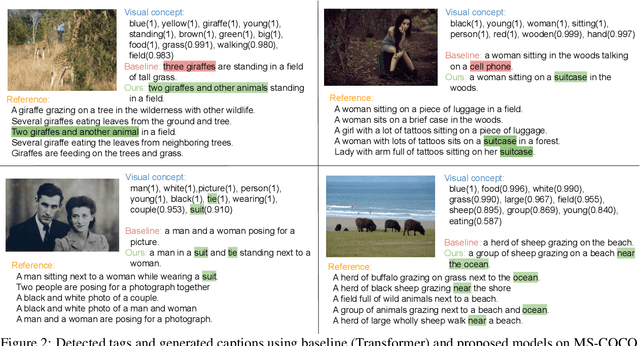

Abstract:Automatically translating images to texts involves image scene understanding and language modeling. In this paper, we propose a novel model, termed RefineCap, that refines the output vocabulary of the language decoder using decoder-guided visual semantics, and implicitly learns the mapping between visual tag words and images. The proposed Visual-Concept Refinement method can allow the generator to attend to semantic details in the image, thereby generating more semantically descriptive captions. Our model achieves superior performance on the MS-COCO dataset in comparison with previous visual-concept based models.
Neural Text Classification by Jointly Learning to Cluster and Align
Nov 24, 2020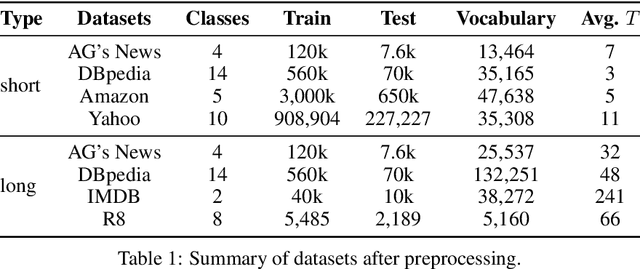
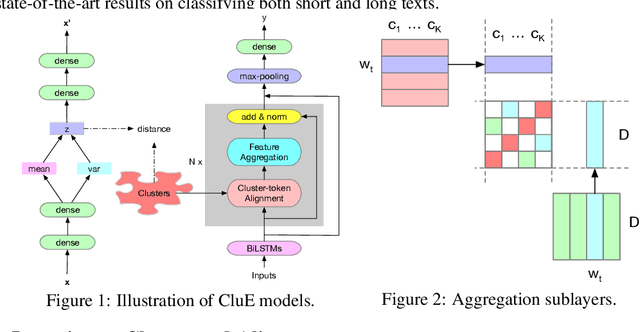
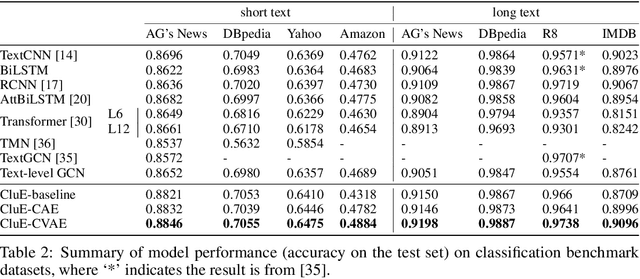

Abstract:Distributional text clustering delivers semantically informative representations and captures the relevance between each word and semantic clustering centroids. We extend the neural text clustering approach to text classification tasks by inducing cluster centers via a latent variable model and interacting with distributional word embeddings, to enrich the representation of tokens and measure the relatedness between tokens and each learnable cluster centroid. The proposed method jointly learns word clustering centroids and clustering-token alignments, achieving the state of the art results on multiple benchmark datasets and proving that the proposed cluster-token alignment mechanism is indeed favorable to text classification. Notably, our qualitative analysis has conspicuously illustrated that text representations learned by the proposed model are in accord well with our intuition.
COVID-19 Chest CT Image Segmentation -- A Deep Convolutional Neural Network Solution
Apr 26, 2020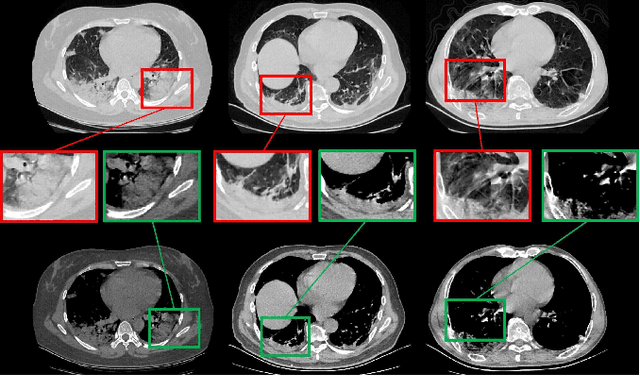
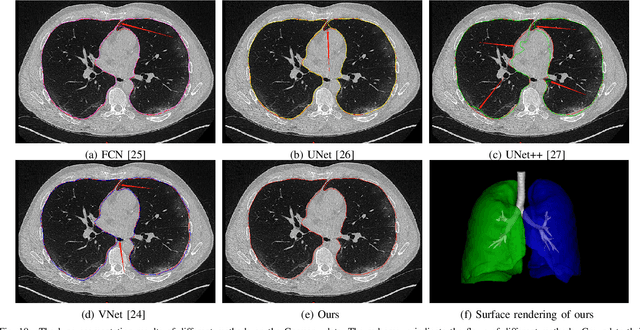
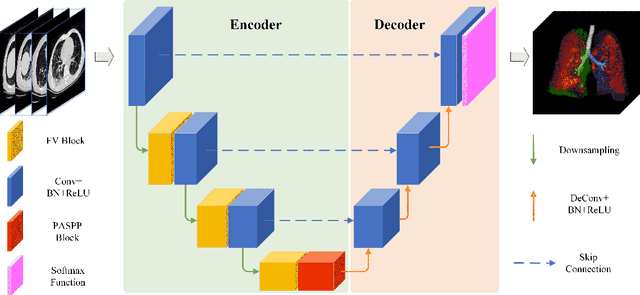
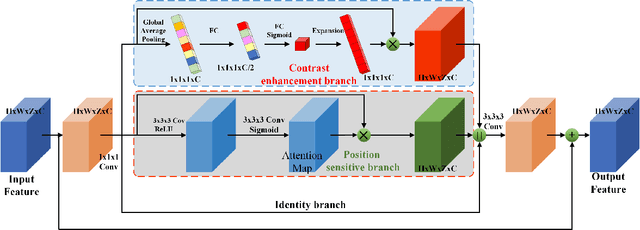
Abstract:A novel coronavirus disease 2019 (COVID-19) was detected and has spread rapidly across various countries around the world since the end of the year 2019, Computed Tomography (CT) images have been used as a crucial alternative to the time-consuming RT-PCR test. However, pure manual segmentation of CT images faces a serious challenge with the increase of suspected cases, resulting in urgent requirements for accurate and automatic segmentation of COVID-19 infections. Unfortunately, since the imaging characteristics of the COVID-19 infection are diverse and similar to the backgrounds, existing medical image segmentation methods cannot achieve satisfactory performance. In this work, we try to establish a new deep convolutional neural network tailored for segmenting the chest CT images with COVID-19 infections. We firstly maintain a large and new chest CT image dataset consisting of 165,667 annotated chest CT images from 861 patients with confirmed COVID-19. Inspired by the observation that the boundary of the infected lung can be enhanced by adjusting the global intensity, in the proposed deep CNN, we introduce a feature variation block which adaptively adjusts the global properties of the features for segmenting COVID-19 infection. The proposed FV block can enhance the capability of feature representation effectively and adaptively for diverse cases. We fuse features at different scales by proposing Progressive Atrous Spatial Pyramid Pooling to handle the sophisticated infection areas with diverse appearance and shapes. We conducted experiments on the data collected in China and Germany and show that the proposed deep CNN can produce impressive performance effectively.
Motion Imitation Based on Sparsely Sampled Correspondence
Jul 25, 2016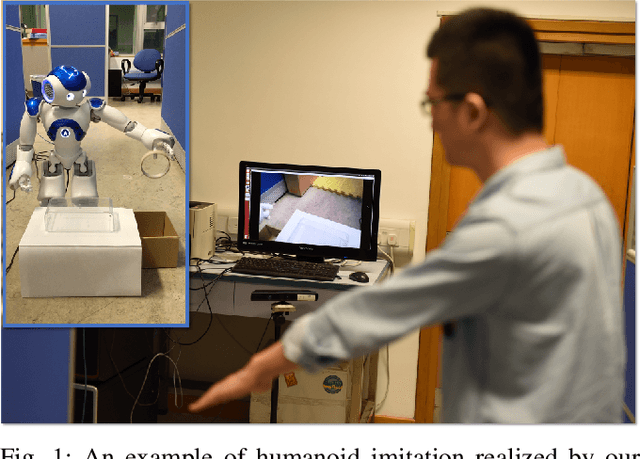

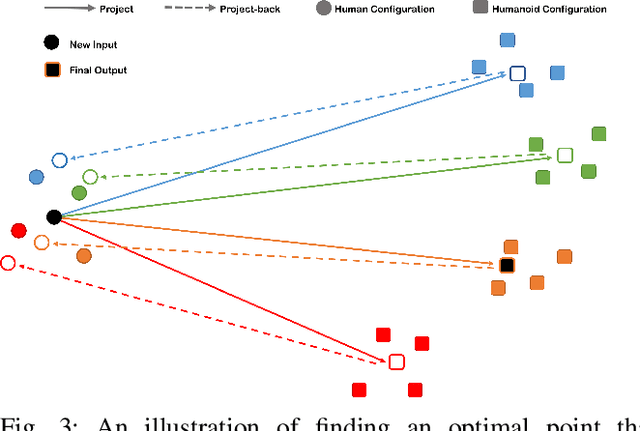
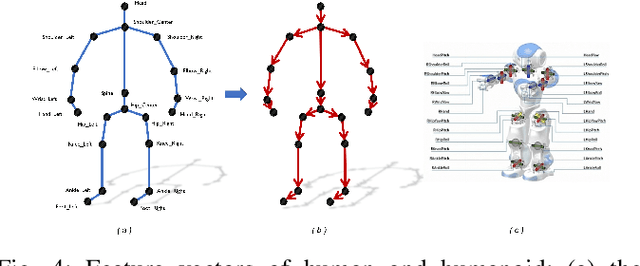
Abstract:Existing techniques for motion imitation often suffer a certain level of latency due to their computational overhead or a large set of correspondence samples to search. To achieve real-time imitation with small latency, we present a framework in this paper to reconstruct motion on humanoids based on sparsely sampled correspondence. The imitation problem is formulated as finding the projection of a point from the configuration space of a human's poses into the configuration space of a humanoid. An optimal projection is defined as the one that minimizes a back-projected deviation among a group of candidates, which can be determined in a very efficient way. Benefited from this formulation, effective projections can be obtained by using sparse correspondence. Methods for generating these sparse correspondence samples have also been introduced. Our method is evaluated by applying the human's motion captured by a RGB-D sensor to a humanoid in real-time. Continuous motion can be realized and used in the example application of tele-operation.
 Add to Chrome
Add to Chrome Add to Firefox
Add to Firefox Add to Edge
Add to Edge